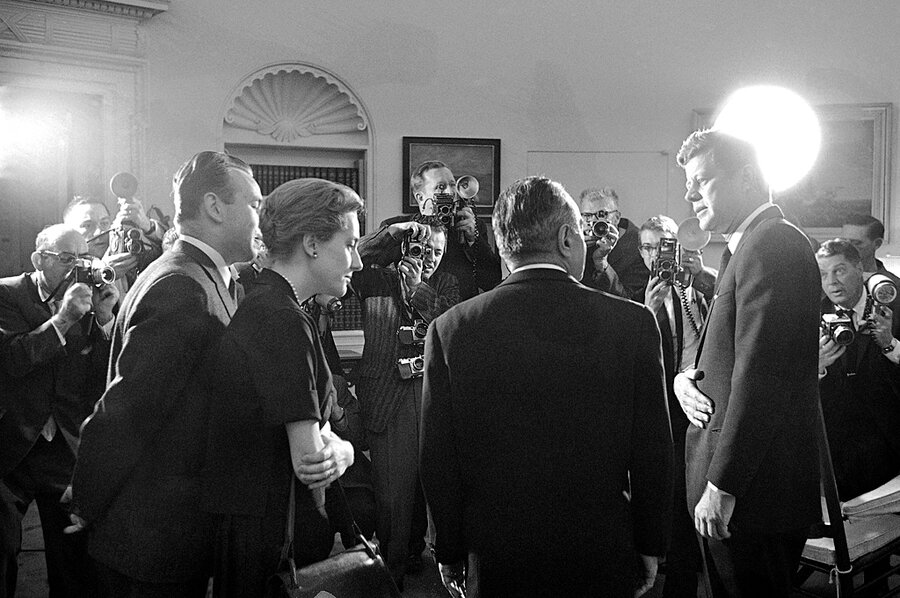The Cuba crisis and the illusion of control
Loading...
History is like archaeology. What humans live through in the present – economic struggles, political contests, national crises – drifts to the ground and slowly gets buried under the strata of more recent events. Then one day we excavate and wonder: What were our predecessors thinking?
When Graham Allison reviews October 1962 with people under the age of 50, their usual reaction is dropped-jaw amazement. How, they ask, could leaders have felt so boxed in that they seriously entertained the idea of nuclear war?
“It just seems incredible to people who didn’t live through those times,” says Dr. Allison, director of Harvard University’s Belfer Center for Science and International Affairs. “They can’t believe that there was a real chance of a war that would leave hundreds of millions of people dead.”
The Cuban missile crisis, which unfolded 50 years ago this week, was the closest the human race has come to nuclear holocaust. It is often explained as an eyeball-to-eyeball confrontation between John F. Kennedy and Nikita Khrushchev. (A good place to explore the crisis is at www.cubanmissilecrisis.org or in Allison’s book “Essence of Decision: Explaining the Cuban Missile Crisis.”) To Allison, who has spent a career examining strategic decisionmaking, the crisis was a turning point in understanding that even the sharpest minds and best teams of advisers are prone to misperception and miscalculation.
US leaders didn’t know, for instance, that Mr. Khrushchev was under pressure at home from hard-liners when he sent short-range missiles to Cuba. The missiles were meant to be hidden, but Russian technicians had failed to camouflage them. The United States didn’t know that tactical nuclear weapons were already on the island and that Soviet commanders were authorized to use them if US troops landed. There were dozens of other factors – from the inability of Moscow to control Cuba and its leader, Fidel Castro, to domestic political calculations in the US, where Kennedy was trying to live down the Bay of Pigs fiasco.
As Allison noted when we talked recently, the Cuban missile crisis showed that “we can unloose processes that we no longer can control.” No single leader can master all the complexities or manage all the players, especially during a fast-moving conflict – especially when ultimatums are issued. The world scared itself straight in 1962. Out of the Cuban crisis came a hot line connecting Washington and Moscow, the Nuclear Test Ban Treaty, the Non-Proliferation Treaty, several generations of strategic arms reduction treaties, and healthy skepticism about military capability, security strategy, and the trustworthiness of intelligence. We are always having to relearn those lessons (see Vietnam, Iraq, and the Soviet and American interventions in Afghanistan).
The Iranian nuclear issue, Allison says, is “the Cuban missile crisis in slow motion.” Attack or acquiesce look like the only options right now. But creativity, compromise, and face-saving might lead to other solutions. Iran, Allison says, might win the right to enrich uranium in exchange for full transparency and clear verification that it is not moving toward nuclear weapons.
History shows that we can bury ourselves by misperception and miscalculation. History also shows we can dig ourselves out.








